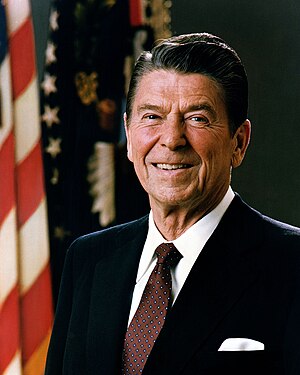 Image via Wikipedia
Image via WikipediaFor 16 years prior to Ronald Reagan's presidency, the U.S. economy was in a tailspin—a result of bipartisan ignorance that resulted in tax increases, dollar devaluations, wage and price controls, minimum-wage hikes, misguided spending, pandering to unions, protectionist measures and other policy mistakes.
In the late 1970s and early '80s, 10-year bond yields and inflation both were in the low double digits. The "misery index"—the sum of consumer price inflation plus the unemployment rate—peaked at well over 20%. The real value of the S&P 500 stock price index had declined at an average annual rate of 6% from early 1966 to August 1982.
Then Reagan entered center stage. His first tax bill was enacted in August 1981. It included a sweeping cut in marginal income tax rates, reducing the top rate to 50% from 70% and the lowest rate to 11% from 14%. The House vote was 238 to 195, with 48 Democrats on the winning side and only one Republican with the losers. The Senate vote was 89 to 11, with 37 Democrats voting aye and only one Republican voting nay. Reaganomics had officially begun.
President Reagan was not alone in changing America's domestic economic agenda. Federal Reserve Chairman Paul Volcker, first appointed by Jimmy Carter, deserves enormous credit for bringing inflation down to 3.2% in 1983 from 13.5% in 1981 with a tight-money policy. There were other heroes of the tax-cutting movement, such as Wisconsin Republican Rep. Bill Steiger and Wyoming Republican Sen. Clifford Hansen, the two main sponsors of an important capital gains tax cut in 1978.
Read the rest of the story here:
Arthur B. Laffer: Reaganomics: What We Learned - WSJ.com

No comments:
Post a Comment